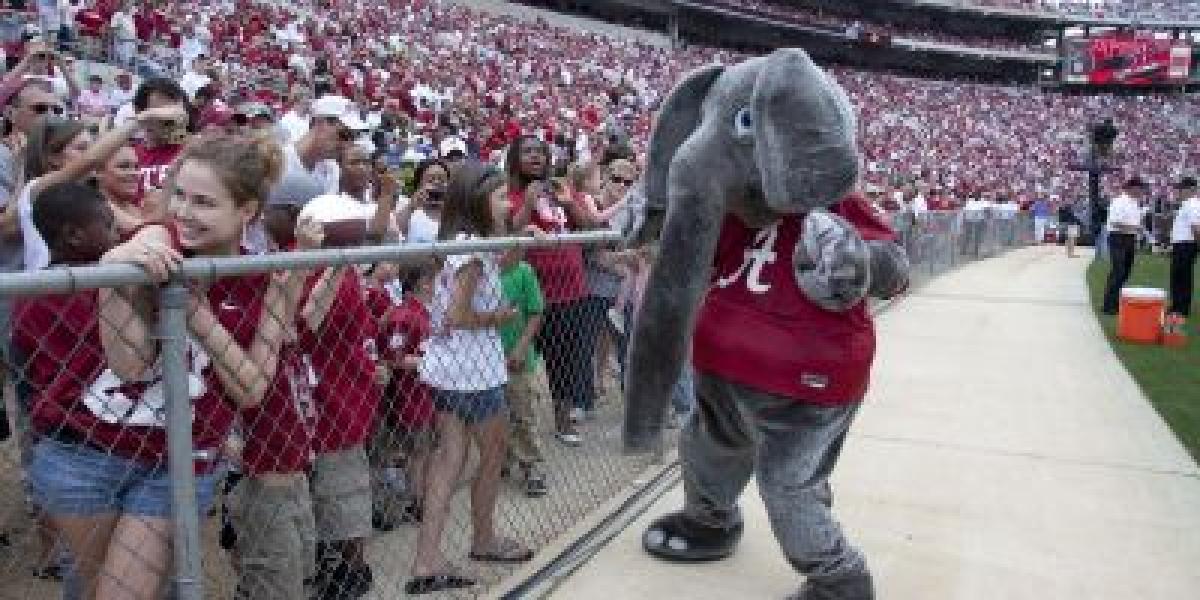In 1907, Alabama faced off against a heavily favored Auburn team in Birmingham. The iron-rich soil of the region transformed into a quagmire under the relentless downpour, dyeing the white jerseys of the Alabama players a deep crimson hue. As the underdogs battled through the treacherous conditions, they managed to hold Auburn to a tie, a feat that defied expectations.
It was then that sportswriter Hugh Roberts of the Birmingham Age-Herald penned a poetic description of Alabama’s performance. He likened the team to a relentless, crimson wave surging through the muddy field, overpowering their opponents. The phrase “Crimson Tide” was born, capturing the essence of Alabama’s gritty determination and unexpected triumph.
Elephant Stampede
The iconic image of an elephant has become synonymous with Alabama football, but its origins may surprise many. The story begins in 1930 when a sportswriter, struck by the sheer size and power of Alabama's offensive line, famously described them as "elephants." The comparison was apt; the linemen were massive, immovable forces that paved the way for their talented backs.
The nickname stuck, and soon the entire team was referred to as the "Crimson Tide Elephants." While the "elephants" part of the moniker eventually faded, the image of the powerful animal remained deeply ingrained in the Alabama football psyche. Over the years, live elephants made occasional appearances at games, further solidifying the connection. Eventually, the beloved costumed mascot, Big Al, was born, bringing the legendary elephant to life on the sidelines. Today, the elephant stands as a proud symbol of Alabama football, representing strength, power, and tradition.




